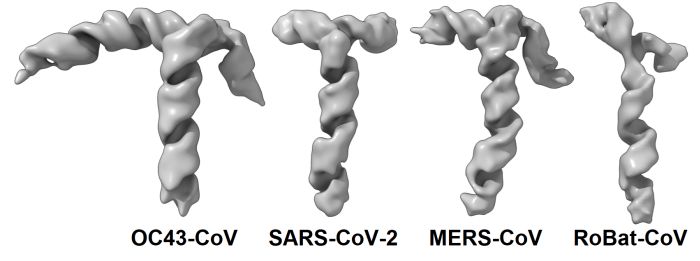
Scientists from the International Institute of Molecular and Cell Biology in Warsaw have discovered important similarities between the main types of betacoronaviruses, including the deadly viruses SARS-CoV-2 and MERS, as well as the OC43 virus that causes colds.
Their discovery may contribute to the development of new antiviral therapies.
Betacoronaviruses are RNA viruses from the Coronaviridae family. They are capable of infecting vertebrates and causing epidemics, including global pandemics in humans, as seen in 2020.
To reduce the threat posed by betacoronaviruses, it is necessary to better understand their molecular diversity. In addition, the development of new drugs against them depends on understanding the key regulatory elements in their genomes. This applies particularly to the so-called the 5′ end, which is crucial for the synthesis of viral proteins.
In a paper published in Nucleic Acids Research (https://doi.org/10.1093/nar/gkae144), an international team led by Professor Janusz Bujnicki from the International Institute of Molecular and Cell Biology, in collaboration with the Consejo Superior de Investigaciones Científicas in Madrid and the Jagiellonian University in Kraków, described the results of a study on the four main types of betacoronaviruses, including the deadly viruses SARS-CoV-2 and MERS, as well as the OC43 virus that causes colds.
The scientists analyzed the RNA nucleotide sequences, which are about 30,000 nucleotides long and differ significantly from each other. They focused not on on the entire viral genome, but on detailed analyses of the spatial structure and dynamics of about 500 nucleotides at the very beginning of the viral RNA (the 5′ end), which plays a crucial role in the replication of viruses in infected cells.
The 5′ ends of the genomic RNA of four different coronaviruses were examined. The scientists used advanced biochemical, biophysical, and bioinformatics techniques, including chemical probing, cryo-electron microscopy, atomic force microscopy, and computer modelling.
The results revealed the presence of very similar structural elements, despite being formed by different nucleotide sequences in the RNA of various betacoronaviruses.
According to the authors of the publication, these results reveal common features of a critical regulatory region shared between different betacoronavirus RNA genomes, which may allow targeting of these RNAs by broad-spectrum antiviral therapeutics
'This discovery is fundamental for understanding the similarities in the functioning of betacoronaviruses,’ says Professor Bujnicki. 'The spatial structures we have identified in the RNA molecules of viruses may contribute to the development of new antiviral drugs in the future.’

Bujnicki adds that the significance of the published discovery goes beyond understanding the SARS-CoV-2 virus responsible for the COVID-19 pandemic and sheds new light on the molecular mechanisms of how all coronaviruses function. (PAP)
PAP - Science in Poland, Katarzyna Czechowicz
kap/ agt/
tr. RL













